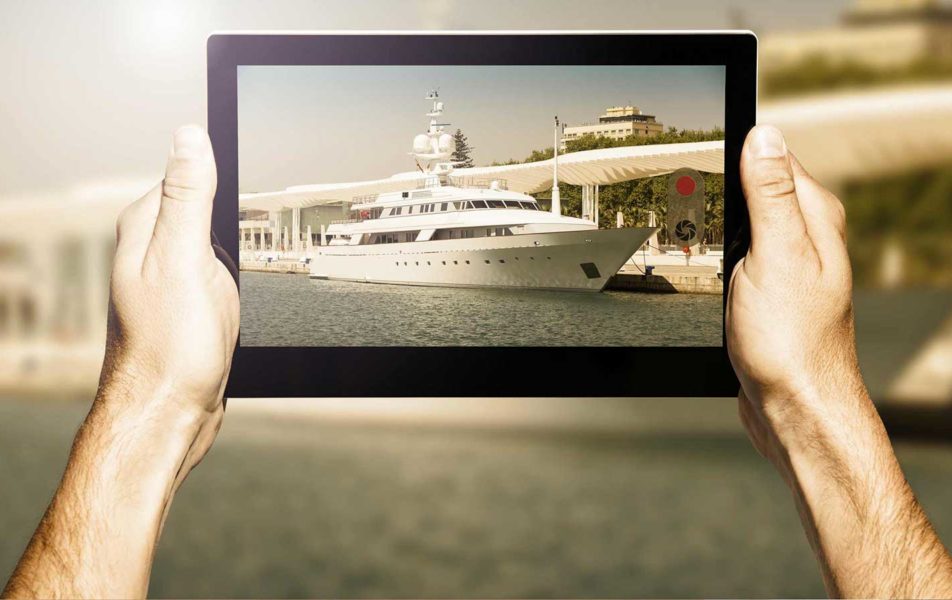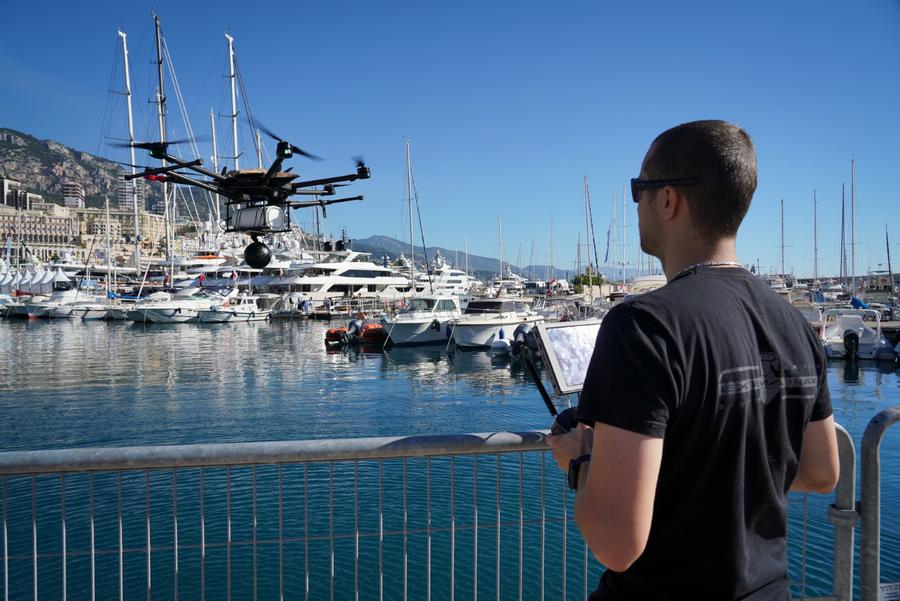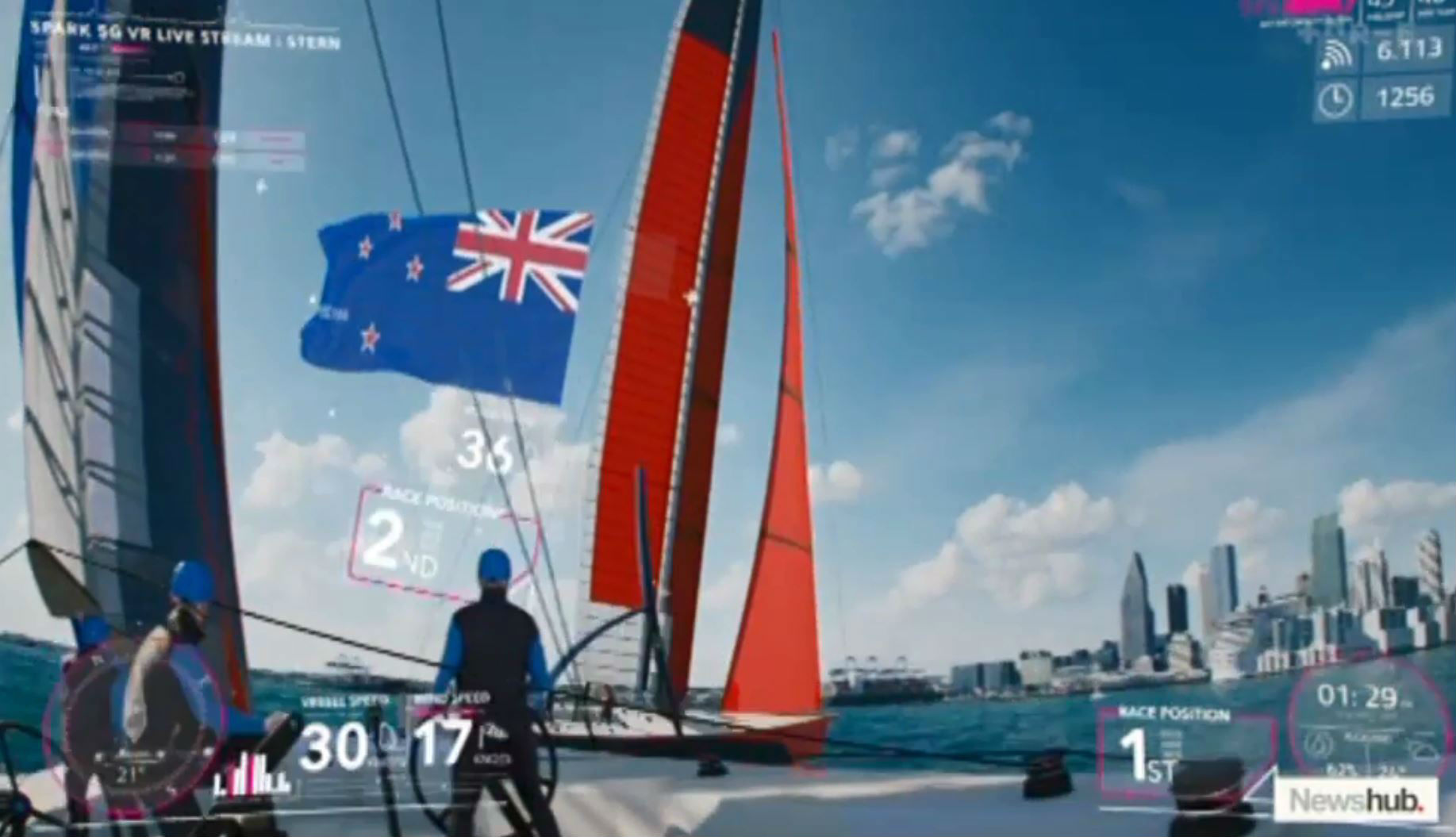From SuperYachtTechnology
5G is set to be ‘mainstream’ by 2019.
But what does 5G mean for superyachts?
5G has for a long time seemed like something far away in our technological future, often talked about but never given serious clout in the present.
Despite the excitement surrounding it, when predictions of 5G delivery were made there were seen as premature and unrealistic.
In a 2016 interview Richard McLaughlin, cofounder of marine WiFi solutions business Aigean Networks expressed how he had been convinced by claims of early 5G plans only for reality to fall short.
“I wasn’t sure Wi-Fi was going to be where it was at with 5G data plans coming along.
I was proven wrong.
Cellular hasn’t rolled out the big speed increases they’ve been promising.
They’re always a few years away,” he said.

Yachts spend over 80% of their time inshore
Now however, 5G is very much on its way and the possibilities it will bring seem to be endless.
At Qualcomm’s 2018 CES press conference, the company predicted that 2019 will be the year that 5G becomes mainstream for mobile (though others say 2020).
These bold claims are substantiated by the fact that the 3rd Generation Partnership Project (3GPP), an organisation which works to provide complete system specifications for cellular telecommunications network technologies, finalised its first 5G specs late last year.
Members of the 3GPP approved the suggested Non-Standalone (NSA) 5G New Radio (NR) specification, meaning commercial vendors now have the necessary guidelines from which they can start building products.
Director of technical marketing at Qualcomm Matt Branda backed this sentiment, saying: “This is really the step that enables vendors to start building equipment.”
The Standalone (SA) version, which will define the full user and control plane capability for 5G NR using the new 5G core network architecture, is due for completion in June.
3GPP have by no means been the only body committing resources and conducting in-depth research into 5G.
Various research bodies have looked into 5G and how it will affect different industries; NGMN (Next Generation Mobile Networks, which claims it has shaped the industry of wireless communication for the past 12 years) and GSMA (an organisation representing the interests of mobile operators worldwide) have both published papers on the topic.
In GSMA’s research paper, titled The 5G era: Age of boundless connectivity and intelligent automation, it recommends the new technology as “an opportunity for operators to move beyond connectivity and collaborate across sectors such as finance, transport, retail and health to deliver new, rich services.”
But what about the marine sector, barely mentioned in these papers?
How quickly will the 5G revolution benefit our superyachts?
An UAV connected in 5G, flying over the world's leading yachting market in Monaco
see gouv.mc
When Superyacht Technology News contacted the GSMA to enquire about our industry, a representative said that its 5G specialists were not aware of any specific examples of how 5G connectivity would profit the maritime sector.
This is not to say that it won’t.
NGMN’s White Paper emphasises the importance of good-quality broadband access being available everywhere, surely including the remote locations frequented by yachts.
The authors describe how with 5G, the entire world’s internet expectations will be allowed to grow.
The minimum user data rate (expected at between 50 and 100 Mbps) will be delivered consistently across coverage areas, even at cell edges where speeds would have previously dropped.
This should allow superyachts to access these higher speeds for longer.
The NGMN White Paper also states how 5G is expected to be deployed for ultra-low-cost requirements, meaning coverage areas will be expanded to include underserved and underdeveloped areas.
This will surely mean that cheaper data plans will be available for yachts in previously unattainable places.
Although there seem to have been no 5G sea trials to date, in September last year Tallink, Telia, Ericsson and Intel announced the first public, live 5G network in Europe at the Port of Tallinn, Estonia.
This trial aimed to deliver 5G connectivity to the commercial passenger cruise ships and their passengers while in port.
Each Tallink cruise ship can carry as many as 2,000 passengers, so from the perspective of area to cover and number of devices onboard, superyachts have nothing on them.
With 5G connected to the on-ship WiFi network, those onboard the vessels could use this high-speed Internet connection during mooring and departure.
This solution used Ericsson’s 5G antenna integrated radio and baseband in conjunction with the Intel® 5G Mobile Trial Platform to transfer passenger data traffic along with data from the ship’s own information and communications systems to a millimetre wave, extending Telia’s mobile network to 5G.
So, it’s clear that achieving this level of connectivity would necessitate an infrastructure upgrade on most yachts.
As Dermot Crotty, Sales Manager at e3 Systems France & Italy joked, “Most yachts’ IT structures can’t support 4G speeds, never mind 5G!”
This kind of refit would no doubt be costly and time-consuming, but the long-term benefits would be worth it.
The Port of Hamburg is the testing ground for 5G, the next generation mobile standard that is set to transform communications.
After six months of preparation the project partners - Hamburg Port Authority (HPA), Deutsche Telekom and Nokia - have now launched a testbed that stretches across some 8,000 hectares of port area. 5G is seen as the communication standard of the future.
It is an entirely new network concept that combines terrestrial and mobile networks.
The testbed in the Port of Hamburg has primarily been set up to test 5G applications in an industrial environment.
The 5G trial programme in the Port of Hamburg forms part of a two-year research project.
Earlier this month, Deutsche Telekom, Nokia and the Hamburg Port Authority also announced that they will commence 5G testing in the busy Port of Hamburg.
As a major logistics hub but also a tourist attraction, the port will test a variety of use cases that place very different demands onto a 5G network.
The Port Authority wants to use 5G to manage traffic lights within the port area, as well as collecting and processing environmental measurement data in real-time.
Virtual reality applications will also be applied to monitor critical infrastructure such as water gates and construction areas to ensure safety in the port.
However, there are no reported plans to test it on the boats moored there.
Team New Zealand to use augmented reality, 5G during America's Cup
These port trials seem like they could be the gateway to future sea trials.
From a superyacht industry perspective, we certainly hope so.
After all, the potential damage caused to the industry if 5G does not develop at a similar speed within yachting could be serious.
It is likely that the difference between communicating on land and at sea would discourage a new generation from becoming owners, dampen the fun of the guests looking to charter out these superyachts and make working on a yacht a whole lot less appealing, with our dependence on and demand for connectivity on an upward spiral that shows no sign of stopping.
Luckily the superyacht sector is typically an early adopter of new technology, and with the sheer amount of money in the industry it tends to be true that when there is a will, there is a way.
It will be a challenge, but if ferries of 2,000 passengers a piece can achieve 5G connectivity then who is to say we can’t?
The pressure is on.
Links :
- MarketingWeek : 5G is the latest hot topic on the bullsh*t roadshow
- VentureBeat : In the 5G era, spectrum sharing is key to cellular and Wi-Fi growth
- BusinessWire : OceanAlpha’s 5G Unmanned Ship Unveiled at Mobile World Congress
- E3S : Islander March 16 Technology Update – 3G/4G/5G – Data Roaming – iPhone boom over?



No comments:
Post a Comment